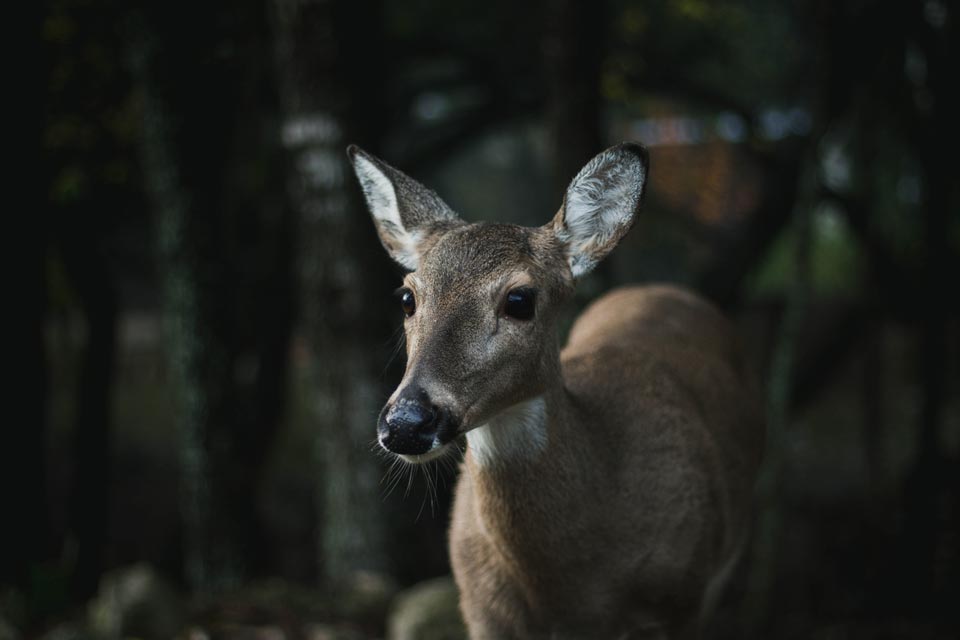Fighting the weather this year has been a struggle. We’ve had to take cover from some pretty violent storms and we’ve had to adjust our schedule because of it.
This week was another week where we didn’t have the luxury to adjust the schedule, so I was hoping for cooperation from Mother Nature. In order to stay within that 1-week vegetation sampling window we needed 4 straight days of vegetation surveys. She cooperated just fine, and—minus some sprinkles—we stayed dry all week!
We split our time between Rothrock and Bald Eagle, saving the easiest plot of the week for last. (I’ve found this is a big morale boost at the end of the week, plus your legs say a big “thank you” after 3 straight days of bushwhacking through face-high mountain laurel).
I was happy to see the first plot of the week was right off a trail. The work, though, was tough because this site has ABUNDANT regeneration. As much as I love to see this many seedlings in an area, I dread counting them. There were a total of 1,446 on Tuesday alone!
We also had some tough plants to ID because of an herbicide treatment we applied to some of the plots last fall. This is an oak (photo below), but what the heck has happened to those leaves?

Our herbicide treatment was not kind to this oak seedling, causing significant changes to leaf shape. One of the things we’re studying is how plant communities respond to herbicide treatment, a management activity that is sometimes used on state forest lands to remove competing vegetation and give tree seedlings a chance to grow.
For my research I am studying the interactive effects of competing vegetation (like mountain laurel, which can inhibit the growth of tree seedlings and other plants), deer browsing, and soil conditions. To study competing vegetation, on some of my plots I applied herbicide and will monitor the vegetation response. Will killing mountain laurel allow other plants to sprout, or grow more vigorously? That is just one of the questions I am addressing.
Wednesday was another tough day because access to the plot was difficult. I’ve tried three different ways to access this plot over the past three years, but I have yet to find a good way to get there. Regardless of the route, the trek is rocky, steep, and full of mountain laurel. It’s a recipe for exhaustion and falling down.
Our excitement for Wednesday was figuring out how to catalog a birch seedling growing 5+ feet off of the ground out of a crook of a sassafras tree. Do we count that as a seedling? Do we not?

What are we supposed to do with this? A 1-3ft birch seedling who appears quite content growing out of this sassafras tree.
Hmmm… plants don’t always play by the rules.
Thursday was another tough trek in Bald Eagle with more rocks and mountain laurel (notice a theme here?). The site was infested with dozens of dead gypsy moth caterpillars that appeared to be infected with baculovirus.
Because I’ve covered my hand in a fair share of these dead caterpillars taking tree measurements, I wanted to know why these guys explode after they die, and why they always seem to die in in plain sight on tree bark. As it turns out, it’s to help spread the virus! (This means I can feel a little better about smelling like rotting caterpillars some days).

This guy looks rough (and dead) after a likely infection with baculovirus.
Despite a couple of gypsy moth caterpillar explosions, Thursday was mostly uneventful. This is a good thing, because this particular part of Bald Eagle has not been kind to me and my crew the last couple of years.
Bad luck includes: abandoning surveys after a much-too-curious black bear visit, getting the truck stuck and hiking 3 hours for cell service, close calls with timber rattlesnakes, and lots and lots of thunderstorms.
No rain + no bears + no rattlers = a productive and happy crew leader! Topping it off with an easy plot to end the week was like eating an ice cream sundae!
-Danielle Begley-Miller
Ph.D. graduate student
Department of Ecosystem Science and Management
PA Cooperative Fish & Wildlife Research Unit
This week’s Deer Plate Special!
Common Name: Allegheny or Common Blackberry
Scientific Name: Rubus allegheniensis
Description: A perennial understory vine of disturbed or open areas that has defined prickles or thorn-like appendages on its stem. The species is a member of the rose family, featuring biennial stems (or “canes”) that are vegetative one year and then produce fruit the next. As you might imagine, deer prefer to eat the first-year growth or new leaves of second-year canes.
Flowers bloom in May to June, and fruit (blackberries) are produced in July through August.
Size: Thickets of blackberry are typically 2 to 6 ft tall, with individual canes 6 to 18 ft long depending on site conditions and browsing activity.



